Jumping out of gear in manual transmissions occurs when gears disengage unexpectedly, potentially causing loss of control. This issue often stems from worn components or improper shifting techniques, posing safety risks and highlighting the importance of proper transmission maintenance and driver awareness.
1.1 What is “Jumping Out of Gear”?
“Jumping out of gear” refers to a situation where a manual transmission unexpectedly disengages from the selected gear, often due to improper shifting or component wear. This can occur when gears fail to engage properly, causing the transmission to slip into neutral or another gear unintentionally. Common scenarios include shifting too quickly, insufficient clutch engagement, or worn synchronizers. Drivers may experience a sudden loss of power or control, especially in high-stress driving conditions. Understanding this phenomenon is crucial for maintaining vehicle control and safety, particularly for new drivers learning manual transmission operation.
1.2 Common Scenarios Where Gears Slip
Gears slipping in manual transmissions commonly occurs during quick shifts, aggressive driving, or improper clutch usage. Riding the clutch or shifting without fully engaging gears can lead to disengagement, especially in high-stress conditions like uphill climbs or rapid acceleration. Overloading the vehicle or towing heavy loads increases the risk of gear slippage due to increased transmission strain. Additionally, sudden downshifting without matching engine speed to gear can cause gears to slip, potentially leading to loss of control. These scenarios highlight the importance of smooth, deliberate shifting techniques and proper vehicle maintenance to maintain transmission integrity and driver safety.

Causes of Jumping Out of Gear
Jumping out of gear is caused by worn components, improper clutch engagement, and aggressive driving habits, all of which strain the transmission system and lead to slippage.
2.1 Mechanical Issues with the Transmission
Mechanical issues within the transmission are a primary cause of gears jumping out. Worn or damaged synchronizers, gear teeth, and bearings can lead to poor engagement and slippage. Over time, components like forks and hubs may wear down, reducing the transmission’s ability to hold gears securely; Additionally, damaged or warped gear shafts can prevent proper alignment, causing unexpected disengagement. These mechanical faults often result from high mileage, lack of maintenance, or excessive stress on the system. If left unaddressed, they can lead to complete transmission failure, making it crucial to identify and repair these issues promptly to ensure smooth operation and safety.
2.2 Driver Error and Improper Shifting Techniques
Driver error and improper shifting techniques are significant contributors to gears jumping out. Common mistakes include not fully engaging gears, abrupt or aggressive shifting, and failing to match engine speed to gear selection. Inexperienced drivers may ride the clutch, causing wear and preventing proper engagement. Additionally, shifting without fully depressing the clutch or using the clutch as a brake can strain the transmission system. Over time, these habits can lead to mechanical stress, increasing the likelihood of gears disengaging unexpectedly. Proper training and adherence to smooth shifting practices are essential to minimize this issue and maintain transmission health.
2.3 Worn or Damaged Synchronizers
Worn or damaged synchronizers are a common cause of gears jumping out in manual transmissions. Synchronizers are responsible for ensuring smooth gear engagement by equalizing the speed of the gear and the shaft. When they wear out or become damaged, gears may not engage properly, leading to unexpected disengagement. Symptoms include grinding noises, difficulty shifting into specific gears, or gears slipping out while driving. Over time, high mileage, aggressive driving, or poor shifting habits can exacerbate synchronizer wear. If left unaddressed, this issue can lead to further damage to the transmission, requiring costly repairs or even complete replacement of the gearbox.
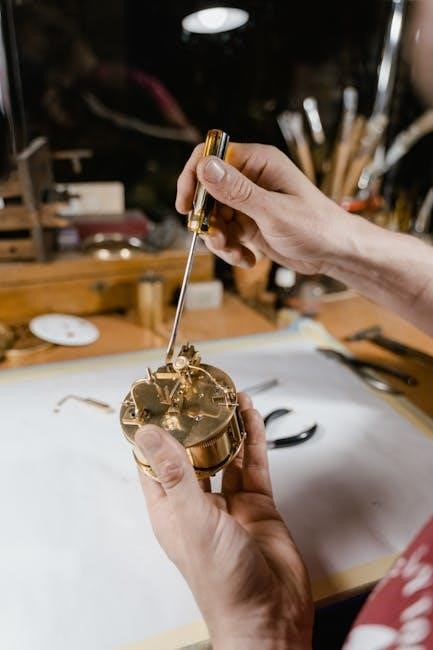
2.4 Clutch System Malfunction
A malfunctioning clutch system is another common culprit behind gears jumping out in manual transmissions. If the clutch fails to disengage fully, it can prevent the gear from properly engaging, leading to unexpected slippage. Issues like a worn clutch plate, faulty pressure plate, or damaged release bearing can cause this problem. Symptoms include gears grinding or slipping out during acceleration. A malfunctioning clutch system can also put additional stress on the transmission’s synchronizers, exacerbating wear and potentially leading to more severe damage over time. Regular inspection and maintenance of the clutch system are essential to prevent such issues from arising.
2.5 Insufficient Transmission Fluid or Pressure
Low transmission fluid levels or insufficient pressure can lead to gears jumping out in manual transmissions. The fluid lubricates components and maintains hydraulic pressure, essential for smooth gear engagement. If levels drop, synchronizers and gear hubs may not engage properly, causing gears to slip. Symptoms include difficulty shifting or gears disengaging while driving. Ignoring this issue can result in accelerated wear on transmission parts. Regular fluid checks and maintaining proper pressure are critical to prevent such malfunctions. Ensure the fluid is at the recommended level and condition to keep the transmission functioning smoothly and avoid costly repairs down the line.

Prevention Tips
Preventing gear jumping involves smooth acceleration, avoiding sudden shifts, and using the correct gear for speed. Regular checks on clutch and transmission components ensure optimal performance.
3.1 Proper Shifting Techniques
Proper shifting techniques are essential to prevent gears from jumping out. Always press the clutch fully before shifting and use smooth, deliberate movements. Avoid sudden shifts, especially at high RPMs. Match engine speed to the desired gear by listening to the engine’s pitch. Use the clutch pedal correctly—fully disengage before shifting and release gradually. Double-clutching can help in high-performance situations. Avoid riding the clutch, as this can wear down components. Consistent and controlled shifting reduces wear on synchronizers and gears, ensuring smoother operation and preventing unexpected disengagement. Practice in low-stress conditions to develop muscle memory for precise gear changes.
3.2 Regular Maintenance of the Clutch and Transmission
Regular maintenance of the clutch and transmission is crucial to prevent gears from jumping out. Inspect the clutch for wear and ensure it fully disengages. Replace worn or damaged components like bearings, seals, and synchronizers promptly. Check transmission fluid levels and top them up as needed to maintain proper pressure; Clean or replace the fluid filter to prevent contamination. Have the transmission inspected professionally if you notice signs of wear, such as grinding gears or slipping. Addressing these issues early can prevent unexpected gear disengagement and ensure smooth, reliable operation. Regular servicing extends the lifespan of your manual transmission system.
3.3 Avoiding Aggressive Driving Habits
Aggressive driving habits, such as rapid shifting, hard acceleration, or riding the clutch, can strain the transmission and lead to gears jumping out. Sudden movements put excessive stress on synchronizers and gear teeth, increasing wear. To avoid this, drivers should adopt smooth shifting techniques, avoid high RPM shifts, and refrain from aggressive acceleration. Proper use of the clutch, avoiding partial engagement, and not resting a foot on the clutch pedal can also reduce strain. By driving calmly and deliberately, drivers can minimize the risk of gears disengaging unexpectedly, ensuring safer and more controlled operation of the manual transmission.
3.4 Monitoring Transmission Fluid Levels
Maintaining proper transmission fluid levels is crucial to prevent gears from jumping out. Low fluid levels can reduce pressure, causing gears to slip or disengage unexpectedly. Regularly check the fluid level using the dipstick or consult the owner’s manual for guidance. Use the correct type of transmission fluid specified by the manufacturer, as improper fluids can degrade synchronizers and gear components. Ensure the fluid is clean and free from contaminants to maintain optimal lubrication and pressure. Neglecting fluid levels can lead to costly repairs, so incorporate this check into your routine maintenance schedule to ensure smooth and reliable gear engagement.
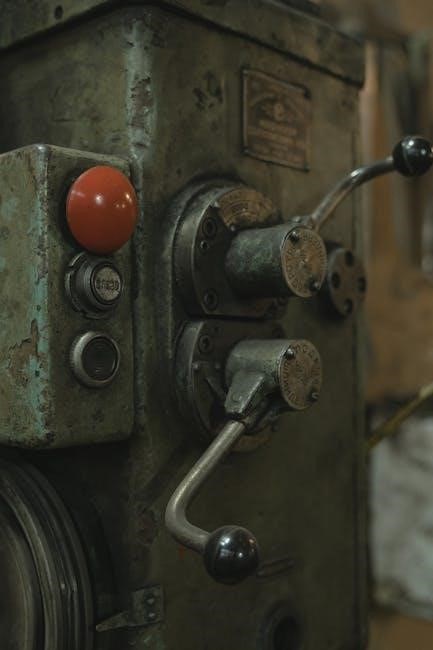
Common Issues Related to Jumping Out of Gear
Jumping out of gear is often linked to grinding gears, difficulty engaging gears, noisy transmission operation, and sudden power loss, all of which compromise driving safety and performance.
- Grinding Gears: Indicates worn synchronizers or improper shifting techniques.
- Difficulty Engaging Gears: Often due to low transmission fluid or a malfunctioning clutch system.
- Noisy Transmission Operation: Points to worn or damaged components inside the transmission.
- Sudden Loss of Power: Results from gears disengaging unexpectedly during operation.
4.1 Grinding Gears
Grinding gears is a common issue linked to jumping out of gear in manual transmissions. It occurs when gears fail to engage smoothly, producing a loud grinding noise. This often happens due to worn or damaged synchronizers, which are critical for ensuring smooth gear transitions. Improper shifting techniques, such as not fully disengaging the clutch or rushing through shifts, can exacerbate the problem. Additionally, low transmission fluid levels or contamination can impair synchronizer function, leading to grinding; Addressing this issue promptly is essential, as prolonged grinding can further damage transmission components and worsen the jumping out of gear problem. Regular maintenance and correct driving habits are key to prevention.
- Causes: Worn synchronizers, improper clutch use, or insufficient transmission fluid.
- Solutions: Replace worn components, adjust shifting techniques, and ensure proper fluid levels.
4.2 Difficulty Engaging Gears
Difficulty engaging gears is another common issue related to jumping out of gear in manual transmissions. This occurs when the gearshift struggles to slot into the desired gear, often due to worn synchronizers or a malfunctioning clutch system. If the clutch isn’t disengaging fully, gears cannot engage properly, leading to frustration and potential gear slippage. Additionally, low transmission fluid levels or contamination can impair gear engagement by reducing hydraulic pressure. Over time, this issue can escalate, making gear changes inconsistent and unreliable. Addressing the root cause, whether mechanical or due to driver error, is crucial to restore smooth transmission operation.
- Causes: Worn synchronizers, clutch malfunction, or insufficient transmission fluid.
- Solutions: Repair or replace faulty components and ensure proper fluid levels.
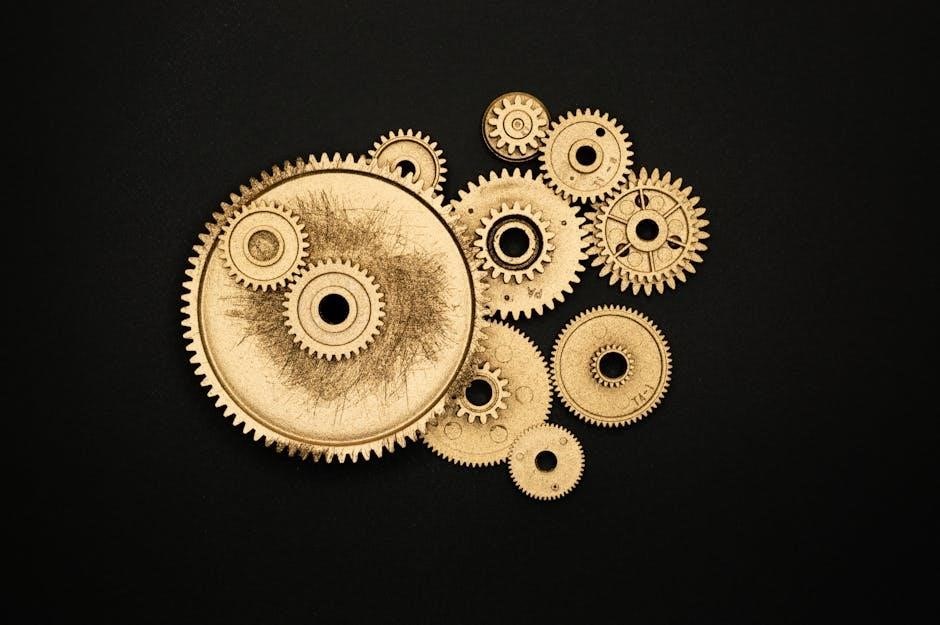
4.3 Noisy Transmission Operation
Noisy transmission operation often accompanies jumping out of gear in manual transmissions. Common sounds include grinding, clunking, or whining, which can indicate worn gears, bearings, or synchronizers. If the transmission fluid is low or contaminated, it may fail to lubricate components properly, leading to increased noise. In some cases, a damaged gear tooth or misaligned gear can also produce loud noises during operation. Persistent noise should be investigated promptly, as it may signal underlying issues that could worsen over time, leading to more severe mechanical failures if left unchecked.
- Causes: Worn gears, insufficient lubrication, or damaged components.
- Consequences: Ignoring noise can lead to costly repairs or transmission failure.
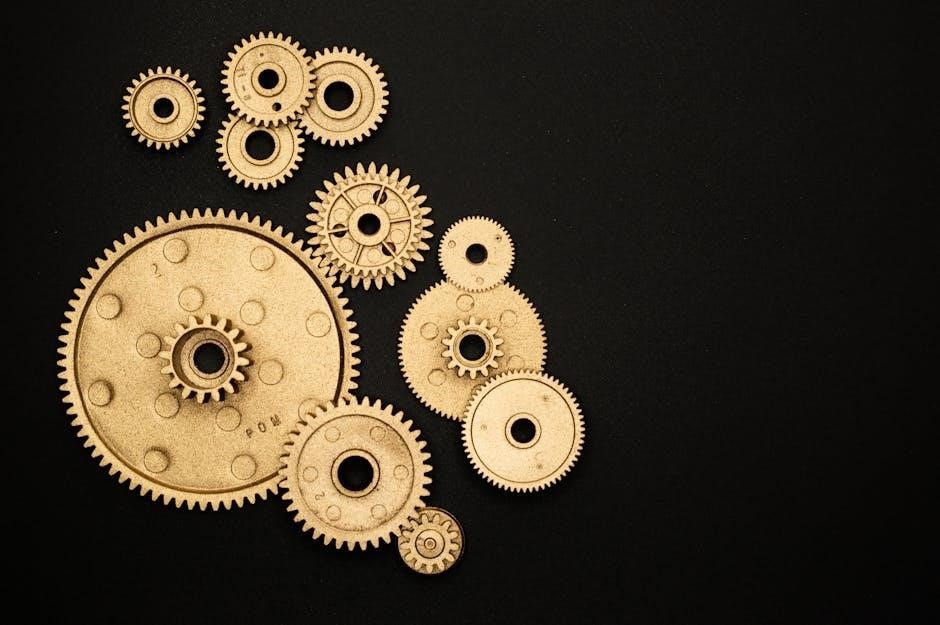
4.4 Sudden Loss of Power
Sudden loss of power while driving a manual transmission vehicle can occur when gears jump out of position, disengaging the engine from the wheels. This disrupts the flow of power, causing the vehicle to slow down or stall unexpectedly. Common causes include improper gear engagement, worn synchronizers, or a malfunctioning clutch. Low transmission fluid levels or pressure can also contribute, as it affects the system’s ability to maintain gear engagement. This issue is particularly dangerous in high-speed situations, as it can lead to a loss of control. Addressing the root cause promptly is essential to restore reliable power delivery and ensure safe operation.
- Causes: Improper gear engagement, worn synchronizers, or clutch malfunction.
- Consequences: Increased risk of accidents, especially at high speeds.

Solutions and Repairs
Replacing worn synchronizers, adjusting the clutch, and refilling transmission fluid are effective solutions to fix gears from jumping out, ensuring smooth operation.
5.1 Replacing Worn Synchronizers
Worn synchronizers are a common cause of gears jumping out in manual transmissions. Synchronizers help align gear speeds during shifts, and their wear can lead to poor engagement. Grinding noises, difficulty shifting, or gears slipping out often indicate faulty synchronizers. Replacing them involves disassembling the transmission, which is a complex process typically requiring professional expertise. Once replaced, smooth shifting and proper gear engagement are restored. Regular maintenance and avoiding aggressive driving can prevent premature synchronizer wear, ensuring reliable transmission performance over time.
5.2 Adjusting or Replacing the Clutch
A malfunctioning clutch can contribute to gears jumping out by failing to disengage properly, causing unintended gear engagement. Symptoms include difficulty shifting and grinding noises. Adjusting the clutch pedal’s free play or replacing worn clutch components can resolve these issues. If the clutch is severely worn or damaged, a full replacement is necessary. Proper clutch maintenance ensures smooth operation and prevents gear slippage. Regular inspection of the clutch system is essential to address problems early, avoiding costly repairs and ensuring reliable transmission performance.
5.3 Refilling or Changing Transmission Fluid
Low or degraded transmission fluid can lead to gears jumping out by reducing hydraulic pressure and lubrication. Refilling or changing the fluid ensures proper engagement and smooth shifting. Symptoms of insufficient fluid include grinding noises, delayed gear engagement, and slipping gears. Regular fluid changes, typically every 30,000 to 60,000 miles, are crucial for maintaining transmission health. Always use the manufacturer-recommended fluid type to prevent damage. If gears slip frequently, checking and refilling the fluid is a quick and effective first step. Proper fluid levels and condition are essential for reliable manual transmission performance and preventing premature wear on internal components.
5.4 Professional Inspection and Repair
If gears continue to slip despite preventive measures, a professional inspection is essential. A mechanic can identify internal issues like damaged synchronizers, worn gear teeth, or clutch system malfunctions. They may require disassembling the transmission to assess and replace faulty components. Professional repair ensures precise adjustments and proper replacement of parts, restoring smooth gear engagement. Regular inspections can prevent major breakdowns and extend the transmission’s lifespan. Mechanics have the tools and expertise to diagnose and fix complex problems, providing a reliable solution to jumping out of gear issues and ensuring safe, optimal vehicle performance.
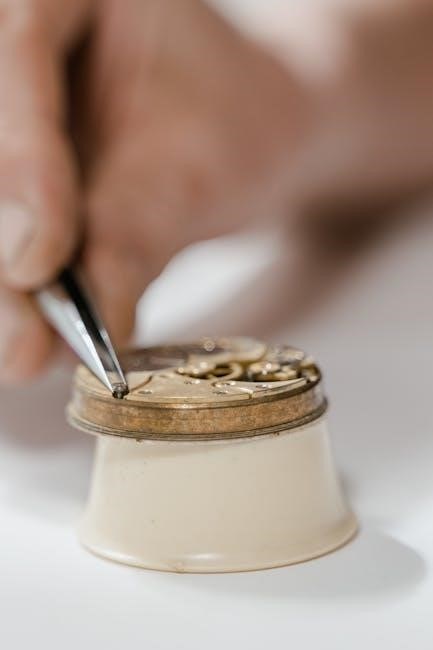
Advanced Techniques for Manual Transmission Control
Mastering double clutching, proper clutch pedal control, and engine speed matching enhances gear control. These techniques ensure smoother shifts, reducing wear and improving overall driving precision and safety.
6.1 Double Clutching for Smoother Shifts
Double clutching is an advanced technique that involves depressing the clutch, shifting to neutral, releasing the clutch, and then engaging the desired gear. This method ensures the engine and transmission speeds align, making shifts smoother and reducing wear on synchronizers. It is particularly useful in high-performance driving or when shifting into lower gears for better control. By mastering double clutching, drivers can avoid abrupt gear engagements and maintain seamless power delivery, enhancing both driving precision and vehicle longevity. This technique is especially beneficial for drivers who frequently drive in hilly or high-stress environments where smooth gear transitions are critical.
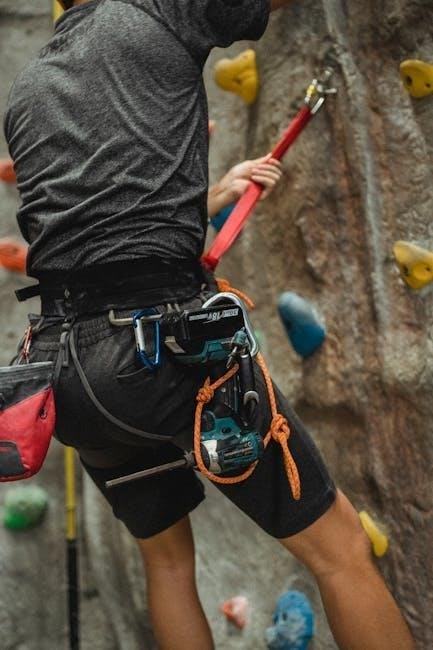
6.2 Using the Clutch Pedal Correctly
Proper use of the clutch pedal is essential for smooth gear transitions and preventing issues like jumping out of gear. The clutch should be pressed fully to disengage the engine from the transmission before shifting; Partial or incomplete disengagement can lead to gears grinding or slipping. When releasing the clutch, do so gradually to avoid sudden jerks. Improper clutch technique, such as “riding the clutch” or releasing too quickly, can cause wear on the clutch and related components, increasing the risk of gear misalignment and unexpected disengagement. Consistent and deliberate clutch operation ensures better control and reduces mechanical strain.
6.3 Matching Engine Speed to Gear Shifts
Matching engine speed to gear shifts is critical for smooth transitions and preventing gears from jumping out. This technique involves synchronizing the engine’s RPM with the gear you’re shifting into, especially during downshifting. By briefly pressing the clutch and using the accelerator to adjust engine speed before shifting, drivers ensure the gear engages seamlessly. Proper rev-matching reduces strain on the transmission, minimizes wear on synchronizers, and avoids grinding noises. This method is particularly useful in high-performance driving or when navigating steep inclines, as it maintains better control and prevents unexpected gear disengagement, enhancing both safety and driving efficiency.

No Responses